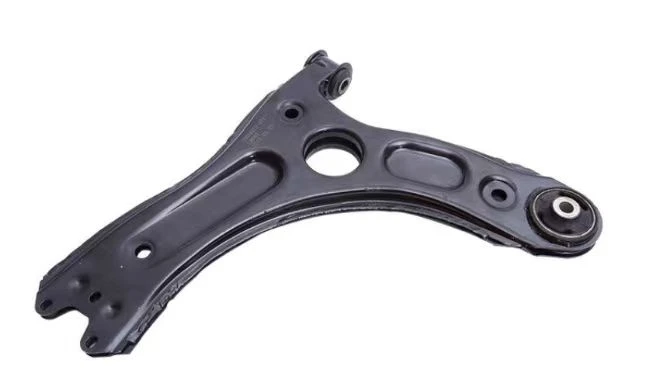
-
 Afrikaans
Afrikaans -
 Albanian
Albanian -
 Amharic
Amharic -
 Arabic
Arabic -
 Armenian
Armenian -
 Azerbaijani
Azerbaijani -
 Basque
Basque -
 Belarusian
Belarusian -
 Bengali
Bengali -
 Bosnian
Bosnian -
 Bulgarian
Bulgarian -
 Catalan
Catalan -
 Cebuano
Cebuano -
 Corsican
Corsican -
 Croatian
Croatian -
 Czech
Czech -
 Danish
Danish -
 Dutch
Dutch -
 English
English -
 Esperanto
Esperanto -
 Estonian
Estonian -
 Finnish
Finnish -
 French
French -
 Frisian
Frisian -
 Galician
Galician -
 Georgian
Georgian -
 German
German -
 Greek
Greek -
 Gujarati
Gujarati -
 Haitian Creole
Haitian Creole -
 hausa
hausa -
 hawaiian
hawaiian -
 Hebrew
Hebrew -
 Hindi
Hindi -
 Miao
Miao -
 Hungarian
Hungarian -
 Icelandic
Icelandic -
 igbo
igbo -
 Indonesian
Indonesian -
 irish
irish -
 Italian
Italian -
 Japanese
Japanese -
 Javanese
Javanese -
 Kannada
Kannada -
 kazakh
kazakh -
 Khmer
Khmer -
 Rwandese
Rwandese -
 Korean
Korean -
 Kurdish
Kurdish -
 Kyrgyz
Kyrgyz -
 Lao
Lao -
 Latin
Latin -
 Latvian
Latvian -
 Lithuanian
Lithuanian -
 Luxembourgish
Luxembourgish -
 Macedonian
Macedonian -
 Malgashi
Malgashi -
 Malay
Malay -
 Malayalam
Malayalam -
 Maltese
Maltese -
 Maori
Maori -
 Marathi
Marathi -
 Mongolian
Mongolian -
 Myanmar
Myanmar -
 Nepali
Nepali -
 Norwegian
Norwegian -
 Norwegian
Norwegian -
 Occitan
Occitan -
 Pashto
Pashto -
 Persian
Persian -
 Polish
Polish -
 Portuguese
Portuguese -
 Punjabi
Punjabi -
 Romanian
Romanian -
 Russian
Russian -
 Samoan
Samoan -
 Scottish Gaelic
Scottish Gaelic -
 Serbian
Serbian -
 Sesotho
Sesotho -
 Shona
Shona -
 Sindhi
Sindhi -
 Sinhala
Sinhala -
 Slovak
Slovak -
 Slovenian
Slovenian -
 Somali
Somali -
 Spanish
Spanish -
 Sundanese
Sundanese -
 Swahili
Swahili -
 Swedish
Swedish -
 Tagalog
Tagalog -
 Tajik
Tajik -
 Tamil
Tamil -
 Tatar
Tatar -
 Telugu
Telugu -
 Thai
Thai -
 Turkish
Turkish -
 Turkmen
Turkmen -
 Ukrainian
Ukrainian -
 Urdu
Urdu -
 Uighur
Uighur -
 Uzbek
Uzbek -
 Vietnamese
Vietnamese -
 Welsh
Welsh -
 Bantu
Bantu -
 Yiddish
Yiddish -
 Yoruba
Yoruba -
 Zulu
Zulu
ഫെബ്രു . 10, 2025 11:43
Back to list
front driver side lower control arm
Experiencing a broken lower control arm is a situation many drivers hope to avoid, yet it's a pivotal component that ensures your vehicle's stability and control. Imagine cruising smoothly on the highway when suddenly you feel an unsettling change in your car's behavior. This experience isn't uncommon, and understanding what transpires when a lower control arm breaks is essential for any vehicle owner.
Authority in this field is established through knowledge sharing by reputable institutions. Well-recognized entities, such as the National Institute for Automotive Service Excellence (ASE), provide certifications for mechanics, ensuring their proficiency in handling such repairs. Literature from these institutions suggests regular vehicle maintenance and inspections—typically every six months—can preempt control arm failures by catching wear-and-tear issues early. The trustworthiness of a repair or replacement service is often gauged by reviews and customer experiences. Trusted auto repair shops offer warranties on parts and labor, a sign of their confidence in the quality of their work. Many satisfied customers attest to the importance of these guarantees, sharing stories where a warranty saved them from additional expenses when a part was defective or the repair wasn't done correctly. The digital age offers a wealth of information, with numerous forums and online communities where vehicle owners share personal experiences related to broken lower control arms. These discussions provide invaluable insights, often highlighting non-obvious signs of impending failure not covered extensively by manufacturers, such as subtle changes in steering feel or the inability of the car to hold a straight line on a flat road. In conclusion, the handling of a broken lower control arm requires a blend of experience, expertise, authoritative guidance, and trustworthy service. For the everyday driver, understanding the symptoms, causes, and remedies for a broken lower control arm can prevent unwelcome situations on the road. It underscores the importance of choosing quality components, employing skilled professionals for repairs, and maintaining a proactive approach to vehicle health, ensuring both safety and peace of mind on every journey.


Authority in this field is established through knowledge sharing by reputable institutions. Well-recognized entities, such as the National Institute for Automotive Service Excellence (ASE), provide certifications for mechanics, ensuring their proficiency in handling such repairs. Literature from these institutions suggests regular vehicle maintenance and inspections—typically every six months—can preempt control arm failures by catching wear-and-tear issues early. The trustworthiness of a repair or replacement service is often gauged by reviews and customer experiences. Trusted auto repair shops offer warranties on parts and labor, a sign of their confidence in the quality of their work. Many satisfied customers attest to the importance of these guarantees, sharing stories where a warranty saved them from additional expenses when a part was defective or the repair wasn't done correctly. The digital age offers a wealth of information, with numerous forums and online communities where vehicle owners share personal experiences related to broken lower control arms. These discussions provide invaluable insights, often highlighting non-obvious signs of impending failure not covered extensively by manufacturers, such as subtle changes in steering feel or the inability of the car to hold a straight line on a flat road. In conclusion, the handling of a broken lower control arm requires a blend of experience, expertise, authoritative guidance, and trustworthy service. For the everyday driver, understanding the symptoms, causes, and remedies for a broken lower control arm can prevent unwelcome situations on the road. It underscores the importance of choosing quality components, employing skilled professionals for repairs, and maintaining a proactive approach to vehicle health, ensuring both safety and peace of mind on every journey.
Latest news
front-lower-control-arm-that-key-to-mitsubishi-lancer-or-outlander-suspension
NewsAug.22,2025
a-arm-car-components-that-premium-suspension-for-hyundai-santa-fe
NewsAug.22,2025
extended-control-arms-that-elevating-vehicle-suspension-performance
NewsAug.22,2025
essential-tools-for-driver-side-control-arm-replacement-procedures
NewsAug.22,2025
comprehensive-analysis-of-front-control-arm-and-front-upper-control-arm-technologies
NewsAug.22,2025
control-arm-that-reliable-automotive-components-by-hebei-lingke
NewsAug.22,2025







